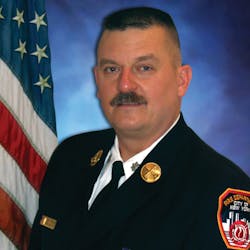Fire Scene: Safe, Effective & Simple Radio Operations
Radio operations is a common topic of discussion during fire department training events. It seems so simple when you say it, doesn’t it? Radio operations. Well, let’s just say it’s not so simple. There have been fires and emergencies where major fire losses occurred, where civilian lives were lost, where firefighters were killed, and where an issue with the portable radio had in impact on the outcome. Fire service fireground radios are not simply communication devices. They are vital pieces of equipment for operations, for accountability and for firefighter survival.
Critical radio issues
There are numerous issues with radios that need to be mastered and observed for them to provide the maximum benefit to firefighters. Let’s look at some of these radio issues.
The first issue is the fact that every firefighter operating anywhere must be radio-equipped. This is neither negotiable nor debatable. That was easy!
The second issue with radios is the manner in which they are carried. There are several methods used, but one stands out as best. The radio needs to be carried under the fire coat or jacket where it will receive the same protection as the wearer. Portable radios are susceptible to damage, destruction and malfunction when exposed to heat and moisture. The place where they are best protected is under the coat. Outside pockets are insufficient. Most pockets are not insulated, and both heat and water can get to and damage the radio. Inside pockets are better, but if the firefighter takes off their coat, they are separated from the radio. The best carry method is the leather case suspended by a shoulder strap over the work duty uniform and under the PPE. The only piece of the radio that should be exposed to the immediately dangerous to life or health (IDLH) atmosphere is the remote mic, and that should be minimized.
The next radio issue is an operational one. Every firefighter who is radio-equipped needs to be radio trained. How many departments actually conduct operational radio training? Many firefighters depress the mic at the same moment they begin speaking—cut off messages. Many firefighters talk over others who are already transmitting—garbled or unreadable messages. Many firefighters transmit unnecessarily lengthy messages when short concise ones work better—ties up the frequency. Every fire company needs to conduct tactical radio training on a regular basis. Regardless of whether this is once or twice a year, it needs to be done, and can be done right in and around the firehouse with nothing more than bunker gear and radios.
The fourth radio issue is the establishment and practice of radio/position identification. Each firefighter who boards an apparatus for any reason should be designated a riding position/assignment. This applies to both career department firefighters, who may be on duty for 24 hours, as well as volunteers, who respond to the fire station from home and work for 45 minutes at an emergency scene.
For example, let’s say you jump into the nozzle seat behind the officer on Engine 587. You locate and don the nozzle radio under your coat (which should be labeled “nozzle”), and when using it identify yourself as “587 nozzle.” This is not difficult. Not only is it simple, it also makes perfect sense. The officer, of course, could be “Engine 587.” The back-up firefighter would be “587 Back-up,” and it goes on and on.
Select and identify each seat on the apparatus as a position, label and provide a radio to each of those riding positions, and expect each of those firefighters to talk on the radio using their “radio identity.” This is not only an operational issue, but it is also an accountability issue. If a firefighter in distress calls a mayday using their assignment identity, then we should know who exactly that firefighter is. We should know their name. Routine transmissions about searches, fire spread, victims located, fire knocked down and every other event or activity should include the identity of the sender and the intended receiver.
Get training!
These are just a few portable radio issues that firefighters, company officers and chiefs should master to increase the effectiveness of fireground operations, accountability and firefighter survival. If you haven’t trained with your radios, get out there and start! 10-4.
About the Author
John J. Salka Jr.
Battalion Chief
JOHN J. SALKA JR., who is a Firehouse contributing editor, retired as a battalion chief with FDNY, serving as commander of the 18th battalion in the Bronx. Salka has instructed at several FDNY training programs, including the department’s Probationary Firefighters School, Captains Management Program and Battalion Chiefs Command Course. He conducts training programs at national and local conferences and has been recognized for his firefighter survival course, “Get Out Alive.” Salka co-authored the FDNY Engine Company Operations manual and wrote the book "First In, Last Out–Leadership Lessons From the New York Fire Department." He also operates Fire Command Training, which is a New York-based fire service training and consulting firm.

